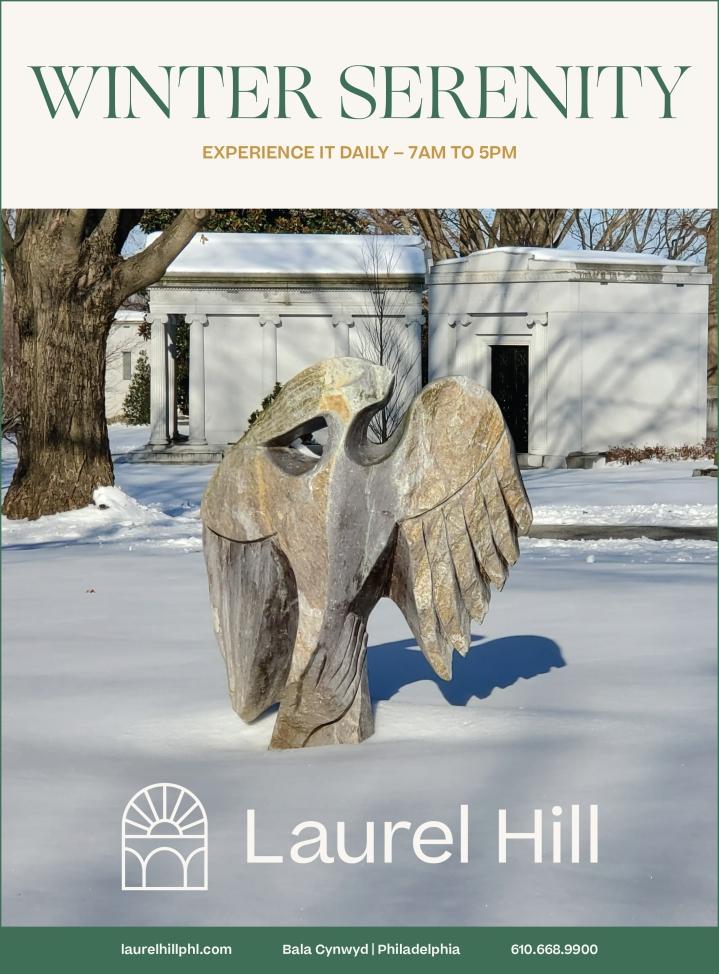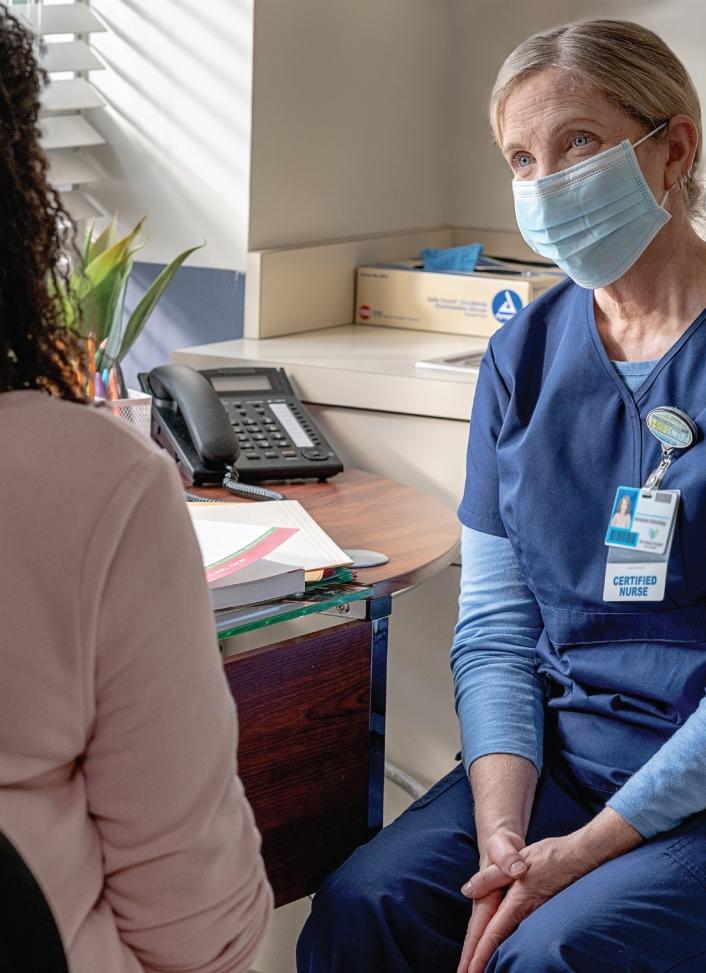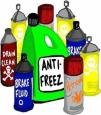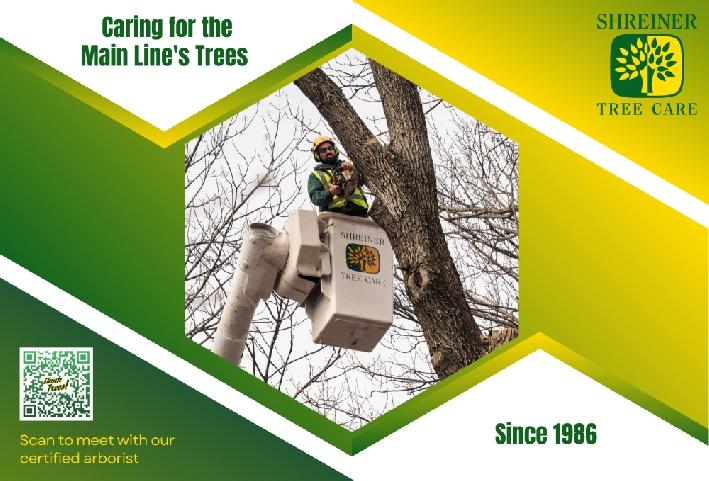














301 Iven Avenue
Wayne, PA 19087-5297
Phone: 610-688-5600 Fax: 610-971-0450 / 610-688-1279 www.radnor.com Mon - Fri 8 am to 4 pm


Township Police
301 Iven Avenue Wayne, PA 19087-5297
Emergency and Call for Service: 9-1-1
Admin. and Records: 610-688-0503 Fax: 610-687-8852 Mon - Fri 8 am to 5 pm
Township Public Works Garage
235 East Lancaster Avenue Wayne, PA 19087
Phone: 610-688-5600 Fax: 610-687-0201
Radnor Memorial Library
114 West Wayne Avenue Wayne, PA 19087
Phone: 610-687-1124 www.radnorlibrary.org
and Ambulance
Emergency Phone: 9-1-1
Radnor Fire Company
Non-Emergency Phone: 610-687-3245 www.radnorfire.com
Bryn Mawr Fire Company
Non-Emergency Phone: 610-525-7702 www.brynmawrfirecompany.org
Broomall Fire Company
Non-Emergency Phone: 610-353-5225 www.broomallfirecompany.com
Willows Park Preserve
490 Darby-Paoli Road
Villanova, PA 19085
Phone: 610-955-9246 www.willowsparkpreserve.org
Wayne Art Center
413 Maplewood Avenue Wayne, PA 19087
Phone: 610-688-3553 Fax: 610-995-0478 www.wayneart.org
135 South Wayne Avenue Wayne, PA 19087-4117

Phone: 610-688-8100 Fax: 610-971-0742 www.rtsd.org
Radnor Township School District Delaware County Courthouse
201 West Front Street Media, PA 19063 Phone: 610-891-4000 www.co.delaware.pa.us
MLTV-Main Line Network
Public Access TV for Radnor Township




110 W. Lancaster Avenue Suite 210 Wayne, PA 19087 Phone: 610-687-5189 www.mltv21.org
Wayne Business Association







P . O. Box 50 Wayne, PA 19087 Phone: 610-687-7698 www.waynebusiness.com
Wayne Senior Center
108 Station Road Wayne, PA 19087 Phone: 610-688-6246 www.wayneseniorcenter.com
Published by Franklin Maps
333 South Henderson Road King of Prussia, PA 19406 610-265-6277



Battle climate change and get pay back in both cash and the satisfaction of knowing that you and thousands of your neighbors, businesses and Towns throughout the Delaware Valley are getting the job done! Some steps require no investment and some do. ALL can save you money. Web sites like https://haverfordclimateaction.org/ provide a one-stop shop for information on things you can do, upcoming webinars, videos and more.
Home solar tax credits went up to 30% for 2022 and beyond making solar payback even better. Non-profits can now also benefit and get a direct 30% federal rebate for systems turned on in 2023. Solarize Delco is continuing to evaluate throughout the fall and winter for installation in 2023. Deadline to sign up for 2023 is Sept. 30, 2023.
Residents and businesses in Delaware County Email us at solarizedelco@gmail.com with name, address and phone number and we can help you assess whether the Solarize Delco program with vetted vendors and a significant discount over market rates is right for you.

Income qualified homeowners can apply for a grant or take advantage of our new partnership with a vetted leasing firm that can reduce monthly bills by a combination of Solar PV and weatherization. Solarize Delco can help you decide what is best for you.
Your neighbors, an all volunteer non-profit providing education, unbiased information and an easier path to putting solar on your home, business or house of worship. We can help Houses of Worship and other nonprofits as well.
More info at www.solarizedelco.org
Search Solarize Philly and Solarize SE PA for programs outside of DelCo.
In Delaware County, PA - fill out a form on www.solarizedelco.org or Email us at solarizedelco@gmail.com with your name, address and phone number and we can help you assess whether the Solarize Delco program with a selected vendor and a significant discount over market rates is right for you. In Bucks, Chester, and Montgomery County - Email solarizesepa@gmail.com
Watch these informative recorded Climate Action Workshops on Solar Home, adapting to Electric Vehicle use, Purchasing Renewable Energy, and others at https://www.youtube.com/channel/ UCwISP41eRhD0SUyHxGpY9xQ
The Clean Energy Co-Op
can help businesses and nonprofits go solar through education and solar development with the capital of local Co-op members. Contact info@cleanenergy.coop to learn more.











Villanova University's Fall Festival is the largest student-run Special Olympics event in the world. The Special Olympics committee contains five subcommittees, comprised of 106 students who work all year to put the event together. Organizers say their mission is to create a more inclusive world.


Mary Kilmartin, the director of Human Resources, said the five subgroups are: Competition, Special Events, Support Services, Administration, and Human Resources. “I think one cool aspect is that each has a different lens of the athletes experiences coming to campus and I think every year we try and push the boundary,” Kilmartin said. “Whether it's creating stronger evaluations, doing off court interviews with competitions, whether it's expanding O-Town or providing more opportunities to speak.”
During the first weekend in November, Villanova hosts over 1,000 athletes, 400 coaches, 5,000 volunteers, and many corporate sponsors for Fall Festival. The athletes compete in Olympic type sports: bocce, long-distance running, power lifting, roller skating, flag football, soccer, and volleyball. Athletes train all year and come ready to compete.
“Preparing for Fall Fest is a lot of practices, some of which we as Villanova students are welcome to join and train with the athletes and just get to know them,” said Festival Director Karoline Menze. “ People are able to make really good friendships and it's within all of the different counties of Pennsylvania that the teams perform in.”
The weekend of Fall Festival, Villanova Special Olympics club members and volunteers dance with athletes and show their support across campus. If athletes and volunteers aren't at the competitions, they're at Olympic Town, or O-Town, at the Quad on Villanova's campus. Menze says that this is the hub of Fall Fest for the weekend. “It occurs Saturday all day until the late afternoon and Sunday morning. We have a DJ, we have student groups from all over campus set up tables along the Quad in front of Bartley and run different activities and do different things that are focused on athlete interactions. This allows for post-competition or precompetition athletes to be able to meet Villanova students and have a good time celebrating their efforts for these events.”
Trevor, a long-distance runner, shared what he valued most during the weekend. “My favorite part of Fall Fest is, of course, the opening ceremonies, I love seeing the torch being lit up, the LPH flash mob dance, and the streamers and basketball game, and of course the Olympic Village.”
Menze was excited for the return of the Healthy Athletes program to campus. “Clinicians come and help give screenings to Special Olympics Pennsylvania athletes who are competing,” she said. “There is a program where athletes can get new glasses that never had glasses before, and I think that's super awesome that we were able to do that this year and have the resources and ability to do that and hopefully in years to come, it's something pretty remarkable that isn't always at the forefront.”
Committee members feel that Special Olympics is a life changing movement of people helping people. According to Faculty Advisor Steve Koch, the entire Villanova Community feels its impact. “It's the formation of the human spirit to champion the fight for dignity. That's what Fall Fest does. It helps to change attitudes and ultimately change behaviors,” Koch said. “It lines up so well with our mission of being an Augustinian Catholic university: servant leadership and trying to create a more just and caring world. That's what Villanovans are here for.”
Villanova students can join Special Olympics to help prepare for next year's event. For more information, visit novaspo.org.
This article is an excerpt from a project by Skylar Musick, a junior at Villanova and intern at Main Line Network in downtown Radnor. The full video, as well as other local television shows and features, will be available on youtube.com/@MLTVMainLineNetwork





but it's hard to be a young person right now.
Young people are remarkable, From navigating anxiety and maintaining healthy relationships to resisting the pressures of social media and managing stress, growing up is more challenging than ever
That means it's also really hard to be a parent right now we need them to tell us
prepared to LISTEN and understand
. As adults, one of our main goals is to help set our kids up for success, today and for the rest of their lives. Because it's often so challenging to see — really see — when the young people in our lives are struggling, when they are, so we can support them in the ways they need. They will talk if they believe we are .
SpeakUp!, a nonprofit in your backyard, helps young people and adults gain the skills and confidence needed to have courageous conversations about the challenges kids face today from stress, mental health, drugs and alcohol to depression, anxiety, suicide, relationships, social media and more.
Visit speakup.org
to register for SpeakUp!'s Parenting Adult Coffees, Grandparent Coffees, and Youth Mental Health First Aid Training.
They can attend without you, and you can go without them - but it works even better when you experience SpeakUp! together!
Parenting Adult Coffees Grandparent Coffees



Wednesday, January 18
Friday, February 24
“Virtual”
Friday, April 28
Friday, February 3 Friday, April 14 Wednesday, April 19 Friday, May 5
Wednesday, May 10
7:00 - 8:15 PM Sexuality & Identity - Virtual 9:00 - 10:30 AM Body Image 8:30 - 10:00 AM Drugs & Alcohol 7:00 - 8:15 PM Drugs & Alcohol - Virtual 9:00 - 10:30 AM Mental Health 7:00 - 8:15 PM Mental Health - Virtual

All in-person programs are held at the
SpeakUp!
Wednesday, January 18 Monday, February 20
Wednesday, April 26 Wednesday, May 24





The Radnor Educational Foundation recently awarded seven grants worth almost $25,000 for programs and equipment that enhance the educational experience for students in the Radnor Township School District.
The diverse grants complement the district's excellence in education by providing our schools with the additional resources they need and by giving Radnor students opportunities to explore new interests. All five schools in the Radnor Township School District have received at least one approved grant.
The Fall 2022 Grant Recipients are as follows:
$5,045 - Summer Reading Camp Incentives - rewards at-risk for low achievement K-12 students that attend the RTSD Summer Reading Camp for additional literacy support. Students earn "Book Bucks" for each day of attendance and at the end of the camp they may purchase books with their hard-earned "Book Bucks" and enjoy a frozen yogurt treat.
$5,000 - Philadelphia School of Circus Arts Residency - provides an engaging opportunity for experiential exploration of the circus arts for our elementary aged students at Ithan Elementary School. The Philadelphia School of Circus Arts will host an assembly program and one week residency, including student performance during Spring 2023. The project will foster student imagination, creativity, problem solving, teamwork, and leadership.
$4,500 - Printing for the Future - funding supports the purchase of a cutting-edge 3-D printer that will be used in each of the three elementary schools. Students will be able to develop more elaborate and professional projects at earlier ages and this printer will allow them to be more innovative and think on a larger scale.
$4,500 - Bussing for Extended Learning Program - provides transportation for students participating in Radnor High School's Extended Learning Program (ELP). The ELP, although serving all RHS students, is meant to target Historically Underperforming students. It is a keystone program at RHS and provides students the opportunity for additional help with English, Math, Social Studies, and Science. The ELP helps to address the unmet needs of students for whom the typical supports are unsuccessful and is needed to increase the academic achievement of students.
$3,751 - Color Poster Printer - replaces the existing poster printer at Radnor
Elementary School allowing teachers, paraprofessionals, staff, and PTO members to create posters as needed in various sizes and colors to accommodate their classrooms and workspaces.
$1,000 - All-District Orchestra Festivalgives students in grades 4 -12 the opportunity to participate in a one-day orchestral music festival. The All-District Orchestra festival will grow the orchestra community within the School District, encourage collaboration between students of different grade levels and between different schools, and build upon skills they are currently working on. Working with a guest conductor provides students with the opportunity to gain different musical perspectives, which is beneficial to their musical development.
$846.58 - After School Pathfinders Program - provides special activities and celebrations for students in Radnor School District's After School Pathfinder Program. The After School Pathfinder program provides students tutoring time for homework, activities, snacks, and occasional meals and creates a safe after school space for students whose parents typically are unable to provide this care for their children.
All grants were evaluated by the Radnor Educational Foundation's Grants Committee for project excellence, project
impact, sustainability, appropriateness of budget costs, and capacity to effectively implement and report on the grant. The Grants Committee submitted their recommendations to the Foundation's Board of Trustees, who approved the seven listed grants.
The Radnor Educational Foundation has awarded almost $1.5 million in grants since its inception in 1994. In the 2021-22 school year, over $70,000 was awarded to 17 grant proposals for innovative projects. The next round of Radnor Educational Foundation grants will be awarded in winter 2023. Applications to be considered for a winter grant are due by January 20, 2023.

In addition to grantmaking, the Radnor Educational Foundation supports families experiencing temporary financial hardship through its Neighbors Helping Neighbors program.
To learn more about the Radnor Educational Foundation, please visit www.radnoreducationalfoundation.org.








If you've ever watched late night television, chances are, you've seen a lung cancer commercial with a survivor hooked up to oxygen. The patient grimly tells you in a raspy voice to not smoke unless you want to wind up like them. While it's true that smoking cigarettes is the top risk factor for lung cancer, there are also other causes for lung cancer—including exposure to radon gas.
In the US, approximately 21,000 people die each year from radon-related lung cancer. About 3,000 of these deaths occur among life-long nonsmokers. In fact, radon is thought to be the #1 cause of lung cancer among nonsmokers. Radon gas can be found indoors and outdoors, but when it's inside, it can become a health risk, increasing your chances of lung cancer.

Radon is a natural radioactive gas that's released into the air when elements like uranium and radium (found in rocks and soil) are released during decay. It mixes in the air when it comes up from the ground. You can't see it, smell it or taste it, but inhaling high levels of radon can damage your lungs and might cause lung cancer.
Radon gas isn't only found outdoors. It can also find its way into underground mines, your house, school and other buildings. Radon gas can make its way into buildings and homes through cracks or foundations. It's also possible for it to be in some building materials like granite and certain concrete products or even well water that has radon. Basements and first floors tend to test for high levels of radon because of how close they are to the ground (radon is in the soil).
"Being exposed to radon gas indoors over long periods of time is dangerous for anyone, especially smokers. It's the second-leading cause of lung cancer in the
US,” says Andrew Pitman, MD, a pulmonologist at Main Line HealthCare Pulmonary Medicine in Bryn Mawr and chief of medicine at Bryn Mawr Hospital. “This is an environmental threat that can easily be preventable with a radon test and a dependable ventilation system.”
Outdoors, the gas has a very low level. When radon gas is in poorly ventilated spaces, higher levels of radon can build up, increasing the risk of lung cancer. That's when it becomes dangerous.
About 40% of homes in Pennsylvania have radon levels that measure above the Environmental Protection Agency's guidelines, making it one of the most serious radon problems in the country Additionally:
Pennsylvania ranks 32nd in the country for lung cancer cases.
While the national average of new lung cancer cases per 100,000 people is 58, in Pennsylvania, that number is 63. This means the rate of lung cancer diagnoses is higher in Pennsylvania than the national average.
Annually, about 21,000 lung cancer deaths in the US are related to radon gas. If you're a smoker and have been exposed to radon, your risk for lung cancer goes up—it's recommended to stop smoking right away.
Only a little more than 10% of nonsmokers exposed to radon get lung cancer
If you think you've been exposed, there are do-it-yourself radon testing kits or you can call a professional to test for radon levels.
While there aren't any medical tests to see if you've been exposed to radon, depending on the home test results, you can still talk to your provider. They'll determine if you need regular health checkups or screenings for possible signs of lung cancer.
Lung cancer symptoms can include:
Chest pain or tightness
Trouble breathing
New cough, or a cough that won't get better
Hoarseness
Difficulty swallowing
If you're having any of these symptoms, it's important to tell your provider who may refer you to a lung cancer specialist. They work with patients to prevent, diagnose and treat lung cancer.
How to reduce exposure to radon. Before you can reduce your radon exposure, the first thing you'll want to do is test your home for radon. In the US, nearly 1 out of every 15 homes has tested for high levels of radon.
Since radon levels can vary depending on the day or month, there are both shortand long-term tests available. Depending on which device you purchase, short-term detectors only check the radon levels between 2 to 90 days. Long-term tests are recommended because they measure radon levels for more than 90 days. Both tests are simple to use and affordable. Your state or local radon official can offer guidance on which test might be right for your home.
Radon levels of 4 pCi/L or higher are considered unsafe, with the Environmental Protection Agency recommending levels are reduced to 2 pCi/L or lower. You'll want to fix your home by hiring a certified or qualified radon mitigation contractor
They'll discuss ways to reduce your radon exposure such as installing a radon mitigation system.
There are different methods to lower radon levels, but the EPA recommends the soil suction method, which blocks radon from coming into your home by sucking it from under your home and redirecting it into the air where it is diluted.
The ultimate goal is to reduce your exposure to radon, which can help lower your chances of developing lung cancer
How can you lower chances of lung cancer?
No one wants a cancer diagnosis. Although lung cancer isn't always avoidable, there are things you can do to lower your chances of developing lung cancer
If you're a smoker, quit. And get your home tested for radon. Taking these preventative steps can help keep you healthy.
If you have questions about radon gas exposure or lung cancer, schedule an appointment with a Main Line Health provider by calling 1.866.CALL.MLH (225.5654).
Andrew Pitman, MD, Pulmonologist, Main Line Health


 By: Shara Bankhead, BS, CVT
By: Shara Bankhead, BS, CVT
While the holiday winter wonderland season has passed, winter is truly here this month, and with these colder temperatures come some hidden dangers for pets!
This common fluid found in most garages is necessary for our cars but can be deadly for pets! Dogs are most likely to ingest antifreeze, but cats ha been known to lap it up as well due to its sweet smell and taste. This is a HUGE concern as the primary
chemical ingredient in antifreeze is ethylene glycol. This chemical elicits an almost immediate effect — similar to wha is seen in alcohol poisoning (altered mental state, difficulty walking/balancing). It rapidly progresses into full nervous s depression and kidney failure, with the damage reaching its peak between 12-36 hours for both cats and dogs.

Is antifreeze poisoning treat even with emergency veterinary care and aggressive IV fluid therapy guarded to poor for full recov
So please remember to keep any antifr securely sealed and well out of your pet's reach and clean up spills immediately
Part of winter life for many is keeping steps, sidewalks, and driveways safe to walk on by using rock salt and/or snow melt. Many types of ice melt contain toxic chemicals or salts and are not safe for pets especially if they lick their paws after walking outside. The best way to keep your pet safe in icy weather is to choose pet friendly ice melt, or clean paws thoroughly when your pet comes inside.
There are many pet friendly options including Safe Paw, Safe Step, Morton's Ice Melt, etc. If you live in a development with an HOA, talk to your board members about what is being used throughout your neighborhood. Chances are, there's more than one pet owner concerned about their pet's safety!
If any outdoor kitties call your neighborhood home, please, please, PLEASE check under your cars, in the wheel wells, and up and under the chassis! When temperatures drop, these heat seeking animals will seek out any source of warmth, and if they choose a vehicle and that vehicle gets started while they're still snuggled in/on it, they can get severely burned, have limbs amputated, or be killed.

If it's too cold for you to venture outside, it's too cold for your pets!
As a general rule of thumb if it's below freezing, in and out potty breaks are all it takes. Granted, some pups need more exercise, and that is perfectly fine.
Depending how long of a walk/run you are going on, consider a coat or sweater for your dog and ensure that they are dry and warm once you've returned home.

Even our sure-footed felines can lose their traction, and fractured limbs, slipped discs, and sprains can also happen to them — and their canine counterparts!
Should you notice your pet holding up a limb, hear a yelp of pain, or notice that one of their limbs is swollen, please call your veterinarian or bring them to see MVA's emergency service.
It can be very dangerous to attempt to treat these injuries at home — most human anti-inflammatories are toxic to pets, and any type of splint/immobilization could result in you being bitten. While you may have the experience to handle this type of injury, there may be more going on that you cannot assess without an x-ray or veterinarian's evaluation.
Stay warm, be safe, and remember, MVA is here for your pets 24 hours a day, 7 days a week, 365 days a year Even holidays.




Carpal tunnel syndrome may be more notorious than it deserves to be. “It's probably the most common hand and wrist diagnosis that people hear about,” says Praveen Murthy, MD, a fellowship-trained orthopedic hand and upper extremity surgeon at Philadelphia Hand to Shoulder Center. If you have pain or tingling in the hands due to carpal tunnel syndrome, simple steps often resolve symptoms. If nonoperative measures aren't effective, surgery can provide fast relief. “Many patients tell me they wish they had come to see me sooner,” Dr. Murthy says. He offers essential information about hand health.


over time. A hand specialist can determine what's really causing pain.



Nerve compression. The carpal tunnel goes through the wrist into the hand and contains a nerve plus nine tendons that bend the fingers. Over time, a variety of conditions can cause these structures to become inflamed and swollen, reducing the space available in the tunnel. The nerve becomes pinched against the roof of the tunnel, on the palm side, which leads to finger pain and numbness that often wake people at night.
There's a natural tendency to sleep with bent wrists, which compresses the tunnel like kinking a garden hose. Wearing an over-the-counter carpal tunnel brace that holds the wrist straight every night for a few weeks sometimes relieves pain sufficiently that people don't need further treatment. Cortisone injections can further help to decrease swelling in the tunnel.
Endoscopic carpal tunnel release typically offers a fast recovery and minimizes postoperative pain in the palm. Patients can use their hand freely after surgery, and many return to work as early as the next day. Patients often tell me they got their best sleep in a long time the night after surgery. Heavy gripping and lifting can hurt for a few weeks, but everyday activities are not impaired. If I had carpal tunnel syndrome, I'd have this highly effective procedure in a heartbeat because of how happy patients are with the results.

Many elements are at play. Several bones and joints can develop problems like arthritis. Ligaments and cartilage can develop sprains and tears. Tendons can develop tendonitis. A nerve can become compressed. All of these can result from injury, overuse or simply wear and tear
If nonoperative steps don't relieve pain or a nerve test determines that signals through the wrist are severely impaired, we can open the roof of the tunnel in a procedure called carpal tunnel release, so that the nerve has all the space it needs. This has been done for decades as an open procedure, using a longer incision in the palm. Today, we also offer minimally invasive endoscopic carpal tunnel rele in which we enter through a small incision in a natural crease of the wrist and rele the tunnel from the inside using a camera.




There are many reasons to visit The Willows, the most beautiful of Radnor's many excellent parks: the picture-perfect pond, as lively as it is lovely, teeming with fish, turtles, frogs and other wildlife; the native wildflowers with their ever-changing floral displays from spring through fall; an abundance of birds, some seasonal, others delighting us year-round; a picnic area for casual feasting with friends and family; superb hills for winter sledding and a creek stocked with trout in the spring. To top it off, literally, is the historic Willows Mansion, perched on a hilltop, with breathtaking views of the park below.
Most Radnor residents would be surprised to learn that the Willows Park is a Certified Level 1 Arboretum, that is, a museum of trees. Obtaining that certification was one of the first acts of the Willows Park Preserve (WPP), a small but mighty nonprofit corporation organized in 2017 to restore the long-shuttered Willows Mansion and open it up for community use. The WPP enlisted the support of Bartlett Tree Experts to help it qualify for the certification, a process that required the WPP to identify at least 25 different species, cultivars or varieties of trees or woody plants on the Willows property. Bartlett identified 48 species.

So, what are these trees and is there anything special about them? Most of them are native species, although there are some non-natives as well. Many of them are familiar, including Sugar maples and Red maples with their blazing red, orange and yellow fall foliage; several oak species with their many-lobed leaves and distinctive acorns; and of course, the
eponymous willows at the edge of the pond, including some non-native but commonly seen Weeping willows.
In addition to these well-known species are some which, like schoolmates at a class reunion, look familiar but whose names we have forgotten or perhaps never really knew. Into this group falls the majestic American sycamore with its massive canopy and smooth, camouflage-like bark that it sheds from time to time in large, jigsaw puzzle pieces.
Some of the arboretum trees have highly unusual features, such as the Bald cypress. A small grove of these trees can be found between the pond and Little Darby Creek. The Bald cypress is a tall conifer which, unlike most conifers, sheds its needles in the fall, leaving it “bald” throughout the winter. But this is not its most interesting feature; that would be its “knees”. Bald cypresses generally grow in wet conditions.
The tree's knees (technically known as “pneumatophores”) are woody appendages that are actually part of the tree's roots. The knees protrude upward from the ground or water around the trunk and are believed to transport air to the submerged roots. They may also help anchor the tree.
Another arboretum tree has a fascinating history, making it one of the most treasured trees in the collection. This tree — the Dawn redwood — dates back to the Age of Dinosaurs and was long believed to be extinct, found only in fossils, until it was discovered in a remote valley in China in the 1940's. After its discovery, seeds were brought to the US and planted in many arboreta and botanical gardens as well as in the private gardens of large homes and estates. Like the Bald cypress, the Dawn redwood is a large conifer that sheds its needles each fall. From a distance, the two trees have a strong resemblance.
No Pennsylvania arboretum would be complete without at least one specimen of Eastern hemlock. It is, after all, the official “state tree” of the Commonwealth of Pennsylvania. There are more than 20 Eastern hemlocks located at the Willows. The Eastern hemlock is a medium to tall tree with soft, feathery evergreen needles. Unfortunately, many Eastern hemlocks across the state are suffering from infestations of the woolly adelgid, a serious, non-native insect pest that sucks moisture and nutrients from the trees. It is important for the WPP and Radnor Township to monitor the health of these ecologically important trees and take appropriate measures to ensure their survival.
A full list of the trees identified in the Bartlett survey, as well as their locations, can be found on the WPP website at www.willowsparkpreserve.org
Taking a self-guided tour of the arboretum trees, or a guided tour offered by the WPP, can be a pleasant way to spend an hour or two at the park any time of the year


If you would like to host your next event at the WPP, register for a program, learn about volunteer opportunities, provide financial support, or simply want to learn more about the WPP, please visit our website: www.willowsparkpreserve.org or email us at: info@willowsparkpreserve.org

It's Not Just a Park, It's an Arboretum!WEEPING WILLOW EASTERN HEMLOCK DAWN REDWOOD




Gift giving is a revered tradition in many parts of the world. But there is an art to obtaining the right item, in the correct color, properly wrapped and perfectly presented. Just as an appropriate gift can strengthen a relationship, an improper one can sabotage it.
Gift gaffes occur everywhere — even in the USA. For example, if you're ever invited to the White House, what type of gifts shouldn't you give the President? Food, drinks, and combustibles (items which may release fumes) are unwise, as are any products which are applied to the skin (colognes, etc.). To protect the President and his family, the Secret Service categorically destroys those items.
You should also avoid items that are taboo in certain cultures. See if you can match the gift faux pas with the religion or region:
A. Pork products 1) Hindus
B. Beef products 2) Parts of Latin America
C. Alcohol 3) Muslims
D. Knives 4) Muslims and Mormons
Answers:
A. — 3) Everything from Canadian bacon to hotdogs is prohibited to observant Muslims — no gift baskets with bratwurst for your Middle Eastern friends.
B. — 1) Many Hindus are vegetarians, and they revere the cow as a sacred animal
C. — 4) Neither Muslims nor Mormons consume alcohol. Be aware that alcohol may be present in many colognes, perfumes, and specialty food items (i.e.,
chocolate cordials and Dijon mustard).
D. — 2) Knives can symbolize the severing of a relationship.
Make sure your gift wasn't manufactured in an environment that is controversial for the recipient. For example, don't give a South Korean something made in Japan.
The wrong color, type, or number of flowers can insult international associates as well. Never send white flowers to an Asian client, or chrysanthemums to an Indian client - they are associated with funerals. And if you present a bouquet to an African delegation, be sure it is an impressively large array. Save the delicate sprays for another time.
Since gifts may be opened at customs, it is wise to wait until you arrive at your destination to have a concierge or local contact help you wrap them. The quality and color of a wrapped present is important in many Asian cultures. And because Asian clients may not open it in front of you, your lovely gift may end up on display throughout your meeting.
Of course, be sure to offer the gift either with both hands, or with just your right.
The list of potential blunders could go on, but let's try a few culturally-appropriate gifts.
Illustrated books, historic items or traditional handicrafts from your home state or headquarters are advisable. These act as invitations to come and visit. Many executives and dignitaries enjoy memorabilia from local universities and sports teams (soccer, baseball, etc.) or prestigious golf clubs as well. Ifyou know
that guests will be visiting, try to find out their hobbies beforehand, and buy tickets to games, shows, concerts or museums that will interest them.
Good hosts spend not just money on their guests, they spend time with them. For example, since relationships are paramount in India, executives often meet their visitors at the airport, and accompany them everywhere throughout their stay.
There are other, more altruistic ways of delivering gifts as well. Benjamin Franklin was one of the most prosperous men in the thirteen colonies at the time of Independence. In his will, Franklin bequeathed extraordinary gifts of 1,000 pounds each to Boston and Philadelphia. Conscious of his working-class origins, the money was to be loaned (at 5 percent annually) to married men under the age of 25 who had completed apprenticeships and wanted to start their own businesses. When paid off, the money was returned to the fund.
Franklin was prescient enough to realize that the need for such loans might eventually vanish. So, Ben's bequest had a time limit: after 200 years, the cities could spend the remaining money on infrastructure. Boston ultimately accumulated some $5 million, while the City of Brotherly Love had around $2 million. In the scope of time, perhaps philanthropy is the best gift of all.
Terri Morrison, Speaker and Author Office 610.725.1040 Mobile 610.742.5359 www.TerriMorrison.com Twitter @KissBowAuthor * Kiss, Bow or Shake Hands® has sold over 475,000 copies, is an Amazon.com bestseller, and Inc. Magazine “7 Best Books on How to Negotiate!”
When the temperature begins to drop, consider these maintenance and end-of-season tasks that will help you winterize your home and protect your property. Here are 10 simple tips for tasks so you can protect your home all winter long:

1. CHECK THE GUTTERS. Cleaning your gutters is an important part of winter prep. A good rule of thumb is to have the gutters cleaned as soon as the last leaves have fallen in the autumn. To prevent clogging, inspect and clean the gutters of leaves and other debris. Clean gutters also allow melting snow to drain properly and prevent ice dams. Make sure your attic floor is properly insulated. The attic itself should be well-ventilated and about 10 degrees warmer than the temperature outside.
2. PROTECT THE PIPES. Protect against frozen pipes by insulating those that could be susceptible to freezing. When the temperature drops below 32 degrees Fahrenheit, keep a stream of water running in a few faucets to guard against freezing and bursting. To protect plumbing under kitchen and bathroom sinks, consider opening the cabinet doors so warm air can surround the pipes. It's also a good idea to learn how to shut the water off and know where your pipes are located.
3. BLOCK THE COLD. Caulk holes and around windows, doors, air conditioners and mail chutes to help prevent cold air from seeping in. Use foam outlet protectors to prevent cold air from entering your home. However, the majority of heat loss typically occurs via openings in the attic. Check to make sure that you have enough insulation.
4. TIME TO WEATHERPROOF. Install weather stripping and seals to prevent cold air from entering your home or heat from escaping it, which will reduce your power bills. Door sweeps are also an effective and easy way to keep the cold out.
5. STOP THE SLIPS, TRIPS AND FALLS. Stock up on staples ahead of time, like a snow shovel, ice scraper, flashlights and extra batteries. Keep driveways and sidewalks clear of ice and snow and repair any issues with steps and handrails. You can also be prepared for winter weather safety by keeping deicing salt handy for sprinkling on steps, sidewalks and your driveway. Be sure to read the directions for proper distribution and protective gear.
6. KEEP IT COZY. Set your thermostat to at least 65 degrees Fahrenheit and make sure your house or apartment is well-insulated. Lower the thermostat a few degrees while you're away or sleeping. Consider installing an energy efficient or programmable thermostat to help you keep warm air in the rooms you use the most without racking up high energy bills.
7. HAVE YOUR HEATING SYSTEM CHECKED. Furnaces, boilers and chimneys should be serviced at least once a year to clear any buildup and to keep them running efficiently. Animal nests or creosote buildup in your fireplace can be hazardous. Have an annual inspection before building your first fire of the season. You should also vacuum or sweep out any accumulated ash from the firebox.
8. TEST YOUR SMOKE AND CARBON MONOXIDE DETECTORS. Residential fires are more common in winter, so it is important that all your smoke detectors work. Check them monthly and replace batteries as needed. You should also consider installing a carbon monoxide detector to avoid inadvertently trapping the toxic gas in your home.
9. CLEAR THE YARD. Keep the trees trimmed and remove dead branches and debris from your yard. Ice, snow and wind can weaken trees and cause branches to fall and potentially damage your home, car or even yourself and others.
10. BRING IN THE OUTDOORS. Cold temperatures, snow and ice can damage outdoor furniture and grills. If possible, store them in a garage or basement. If you have a gas grill with a propane tank, close the tank valve and disconnect the tank first. It must be stored outside. If you don't have storage space for your items, purchase covers to protect them from the elements. Remove all garden hoses that are attached to the house, drain them and store them away. Shut off the valves and insulate the faucet.
If you are heading south for the winter, you need to take extra precautions. Turn the water completely off and consider having the plumbing system drained to keep pipes from freezing. Also, have a friend or neighbor check on your home regularly to look for any issues. If a problem is detected, act quickly to minimize potential damage to your property.
Compiled from www.grangeinsurance.com and www.lowes.com.







Golf is such a healthy hobby. You get outside, breathe deeply and enjoy perfectly-curated courses. And yet, there is always a bit of a risk with nature. Even golf courses can be red in tooth and claw.
Consider Skukuza Golf Club, where you must sign a waiver of indemnification prior to playing. Why? Because it abuts Kruger National Park in South Africa, and the warthogs, hippos, and lions have as much right-of-way to the fairways as you do. But no worries, if you want to give that buffalo a wide berth, you can claim relief.
The USGA's “Dangerous Animal Condition” (sub 16.2b of usga.org rules) can be invoked if playing could cause you serious physical injury because your ball is in close proximity to dangerous creatures like snakes, bees, fire ants, bears, or alligators.

Up here in Pennsylvania, Canadian geese are the mundane bane of golfers and greenskeepers' lives. But a far more enthralling bird can be found on some PA courses—the Bald Eagle. Due to a restoration program between the Pennsylvania Game Commission and the Canadian government (which provided the chicks) the population has increased from only 3 nesting pairs in 1983, to over 300 nests in 2020. You can check out data on our national bird in PA at Bald Eagles (pa.gov)
Some golf courses have actually become sanctuaries for declining species, like burrowing owls. Researchers paired with nine golf courses in eastern Washington state to install 130 artificial nesting burrows for these adorable avians. And since they are active during the day, the owls provide an enchanting opportunity for players to enjoy some real consistent birdies.
golfers. Our classification as a non-profit keeps costs down, and our club organization ensures all members have input in club operations. The result is competitive golf in a collegial atmosphere at a great price!
GTGP is also an associate club of the Golf Association of Philadelphia. Members are eligible to play in GAP
Member Play Days at private clubs in the area.
The latter are relatively common throughout southern Florida. You've seen the video of the massive alligator strolling across Buffalo Creek Golf Course in Palmetto, Florida, yes? Giant Gator Walks Across Florida Golf Course | GOLF.comYouTube Nicknamed “Chubbs,” he is estimated to be about 16 feet long, and has actually been a draw for the course. Golfers are advised to let him play through.
Marsupials can be impressive interlopers too. Imagine trying to tee up with a troop of kangaroos in front of you! According to former Australian Police Officer, Anthony Elliott, the roos usually emerge at dusk, and while they can be lethal if threatened, the mob is generally pretty docile. But they are a protected animal, and it's an offense to injure them. So, patience, mate.

Like to join a group of birdie lovers? The Golf Tour of Greater Philadelphia welcomes new players in the new year!

Information about our tours and tournaments is available at www.golftourphilly.org, or by emailing
TonyMcCarthy@golftourphilly.org Happy Holidays, and see you on the links!
*The Golf Tour of Greater Philadelphia (GTGP) is a locallyoperated golf league for amateur

www.golftourphilly.org
TonyMcCarthy@golftourphilly.org 484.753.4914


 By Laurie Lamont Murray
By Laurie Lamont Murray
When the holidays are over and everything is back in place, does it ever feel like something is needed? A little more excitement, some color or just a change? Art can do that.
If you own a few pieces of art, you might start by trying them in new locations. Can what you already have be grouped to add some interest? Would some accent pillows pick up the colors in your art? Maybe there are some things you've outgrown. Art and accessories you put into a shopping cart at Homes R Us back in the day may not harmonize with some of your updated furnishings. Donate those and begin collecting whatever speaks to you. What captures your imagination might even surprise you: One of the first pieces I ever bought appealed to my sense of humor: The chubby bronzed girl squeezing under a barbed wire fence after a day on a closed-off beach looked nothing like me but I loved her free spirited sense of adventure, and the artist's playful statement. Years later, it still makes me happy to see her.
So how do you begin collecting art? Unless you are in that rarified 1% of the population, the process is to gradually add a piece now and then, rather than investing for profit. In fact, the art market is precarious, like everything in life seems to be. So without thousands upon thousands to spend, and a vault to store your treasures, you will be perfectly happy choosing what really means something to you.
For some of us, first purchases may commemorate a vacation, maybe mountains, an old village or a beach scene, to remind us of happy times. There may be a story to tell about your purchases. Here's one of mine: Years ago I went to an auction with my mother. She was not impulsive by nature, and I felt safe knowing that her thoughtful restraint would keep the two of us in check. Wrong! Her bidding card was waving wildly before I could blink. (I went home with my first 4 pieces.)
Auction fever isn't the only, or necessarily the best way to explore art in this era. There are art fairs and studio tours, gallery openings and special events almost every weekend, no matter where you live. You can do your homework by googling the
artists who are showing, or just go because it's fun. There is always something to learn, whether by asking the artists questions, listening to a presentation or reading any printed material. QR codes are often available, allowing you to look now and read later.
If you see something you like, do you have to know exactly where it should go, and whether the size and colors will be right?
You know that old saying, “I don't know much about art but I know what I like.” What often happens is that we expand upon what we like over time. Or we like very different things for different reasons. If you are adventurous, try hanging pieces which at face value don't “go together”. You may be surprised! Or think about what appealed to you in the first place. A soothing landscape may be great in a bedroom, while an abstract might be a statement piece in a living room. Some of the things that can work together well: Color, subject matter, scale. Some things that don't have to be together: All the same mediums (e.g., watercolors with watercolors), all the same type of art (realism, abstraction, impressionism etc.) And the frames don't all need to match. In the image shown, there is a mix of sizes and subject matter, with varying degrees of abstract and realism, framed and unframed. The colors and visual weight are balanced effectively.
Not necessarily. There are lots of guidelines and rules out there, but there is no substitute for your own conviction. The whole point of owning art is to live or work in a space that looks and feels like you, not like every other house/apartment/office in your area.
Many artists, gallerists and interior designers are willing to help you place your art effectively, and to suggest groupings or other tweaks that will elevate your space from bland to spectacular
You may be able to get the artist to bring a few pieces for you to try on site to see which you'd prefer. There are almost always a few great solutions to designing your environment, and another pair of eyes will give you some suggestions that might-not occur to you otherwise.
What if you already have several pieces of art on your walls? Why not rotate your collection to give yourself a vacation from the overly familiar? Bright colors are an antidote to winter doldrums, and less colorful pieces may be more pleasing when the sun is shining. If the art you collect makes you happy any time of the year, it can still be fun and interesting to move things around a bit. Most art can be stored easily and brought back out when the mood strikes.
If you have decided to figure things out without the aforementioned 'staff' (artist/gallerist/designer) on hand to help you, how do you decide what will work…before you start hammering holes into your walls? If you are tech savvy, you can try layouts on your computer. Or, if hands-on is more your style, clear some floor space to approximate the length and height of your wall. Set your art down and move things around to see what you like where. Take pictures with your cell phone so that you can remember some of your options more easily.
About those nail holes: Everyone makes a mistake now and then. One trick is to carefully fill the hole with toilet paper and touch it up with paint to match the wall if necessary. Or—if you went crazy with your hammer—accept the fact that wall paint is fairly inexpensive and cover your tracks with a fresh coat.
Here's a thought: Was there a color that drew you to the painting you fell in love with? Why not paint the wall it's on with that color, or a variation. Accent walls add a lot of interest to a room and you can experiment by purchasing a small can and painting cardboard or butcher paper to see whether you'll like it.
Whatever you do, have fun! Wishing you an artful and very happy new year







